The quest for renewable technologies: how does it impact the deep sea?
In June of 1974, the crew of the Hughes Glomar Explorer set out for an expedition that would spark the world’s interest in a novel mining industry. The expedition, dubbed Project Azorian, was intensely covered in the U.S. media – with the promise of a hefty bounty of newly researched polymetallic nodules (potato-sized lumps of raw metal ore), worth millions of dollars, mined from the deep seafloor. As exciting as the story was, the entire expedition was merely a well-orchestrated lie by the United States Central Intelligence Agency (CIA).
Indeed, Project Azorian was not a mining expedition but instead a cover up operation for the recovery mission to retrieve a sunken Soviet nuclear submarine. In order to substantiate the made up story, the CIA used an eccentric billionaire – the late Howard Hughes – as the face of the operation. Their idea was to create such a watertight story that it would pull the wool over even the Soviet Union’s eyes, as they attempted to steal one of the most vital pieces of lost Soviet intel from the depths of the ocean floor.1
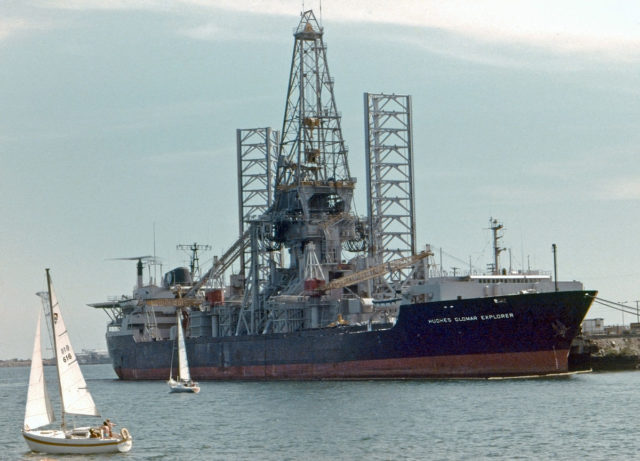
(Source: Wikipedia Commons, CC 3.0)
While the mission was impressive, it yielded little for the CIA: the submarine was torn apart upon retrieval and the coveted intel sunk once again, never to be found. Although the technological achievement involved at the time was second to none, it was the subterfuge prior to the mission that has had the greatest impact. You see, up until that point, deep sea mining was a pipe dream – a totally unrealistic business venture that whilst potentially very profitable in theory would never yield actual results. The CIA went to great lengths to legitimise the mission: they diverted a significant amount of money into scientific funding to work out the logistics of it, and used Howard Hughes to portray the mission as a credible business venture for the aspiring mining industry mogul. Consequently, with this incredible work of deception by the CIA, deep sea mining was cemented in the public eye as a novel avenue for sustainable resource mining, regardless of technical issues and potential ecological catastrophe.2
Fast forward to the present day, how much has the deep sea mining industry progressed? Surprisingly, not as much as one would expect since the 1970’s. Project Azorian certainly brought the concept to the public eye; however, the reality was and remains that terrestrial mining is relatively much easier, cheaper, and safer than deep sea mining. However, the tide is turning and it’s turning fast. Terrestrial metal resources are dwindling, and for many companies the promise of such a vast amount of untapped riches is becoming more attractive; and the thing is, even from a conservationist’s viewpoint it’s hard to blame them. When talking about deep sea mining, it’s not necessarily involving greedy oil companies – seemingly determined to destroy the world in their quest to gain ever more riches (can you tell I’m an environmentalist?) Instead, deep sea mining is often looked at from the perspective of a new era in industry, the renewable era.3
All the biggest technology companies in the world are looking to make themselves greener, more forward thinking and more sustainable. Companies like Tesla make a name for themselves by being the gold standard in sustainable innovation – creating exciting new environmentally-friendly technologies such as affordable solar energy and electric cars that also let you play video-games. However, this supposedly sustainable technology comes with a caveat: it needs metal, potentially more than our terrestrial mines can provide.
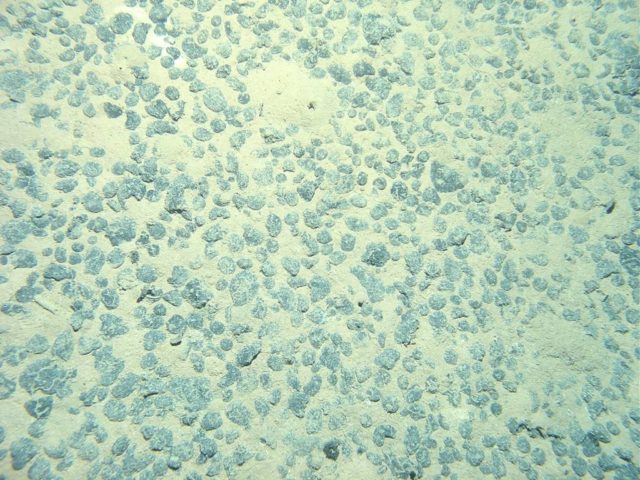
(Source: Wikipedia Commons, CC 3.0)
Polymetallic nodules in the deep sea contain some of the most vital metals that many new renewable technologies rely upon: nickel, copper, manganese, and cobalt to name a few.4
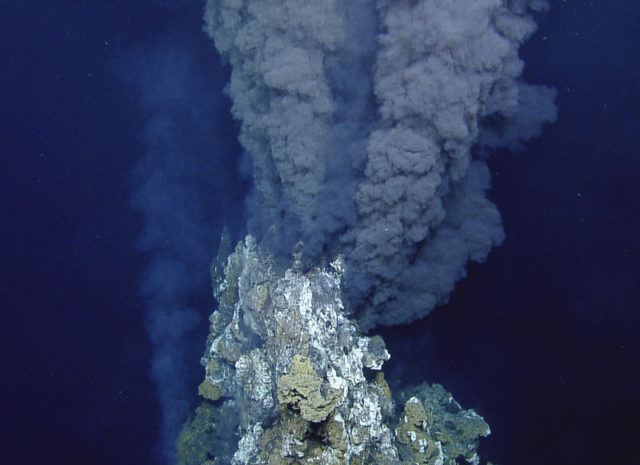
(Image by Penn State on Flickr, CC 2.0)
As terrestrial mines are depleted of these materials it becomes clear to see the deep sea as the next step in resource extraction, that will catapult us into a new era of sustainability, and in so doing makes it easier to ignore the problems associated with deep sea mining. One might think of the deep sea as being empty and devoid of all life due to its monumental vastness, but it’s not. The deep sea is one of the most ecologically diverse and yet most understudied areas on the planet. New species in the deep sea are still being discovered, currently at a rate of a whopping ~2000 per year, and it is estimated that around 91% of all ocean species are yet to be classified.5
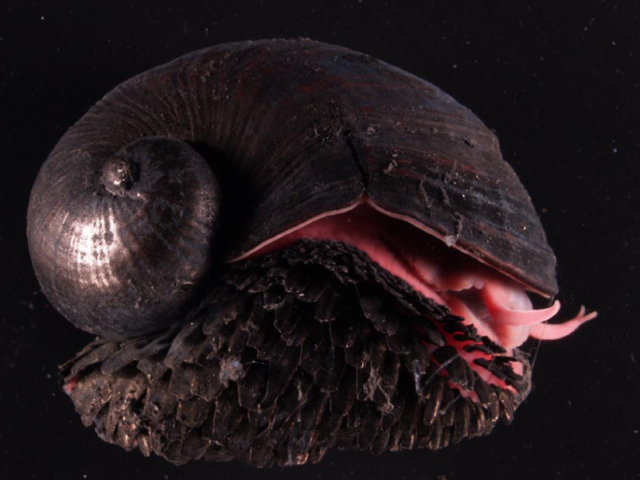
(Source: Wikipedia Commons, CC 2.5)
Furthermore, the deep sea is not just featureless abyssal plains either; in fact, it comprises of some of the most complex topography on earth – from deep canyons scarring the landscape, towering seamounts extending thousands of meters in height, and the ancient monoliths called hydrothermal vents that are essentially giant chimneys spewing superheated chemical soup from the Earth’s crust. Unfortunately, these environments have two common characteristics: they all nurture life and they all have a lot of metal reserves.
As consequential as the economic gain from the metal reserves is, so is the negative impact on the environment of the deep sea. All of the methods that are currently deployed to mine the deep sea are potentially harmful, regardless of geographical area. For instance, in the abyssal plains, manganese nodules are sucked through a huge pipe, destroying the ecosystems that rely on them to survive. On seamounts, the entire cold water coral ecosystems that reside there must be ripped up to access the cobalt-rich crusts below. Additionally, at hydrothermal vents, the extraction of polymetallic sulphides from the crusts means destroying the habitats wherein some of the most unique and ecologically important animals on earth, such as the sea pangolin, make their homes. The sea pangolin is a particularly charming scaly-footed snail which wouldn’t look out of place in a gastropod death metal band and lives a lifestyle about as extreme as it gets. It lives on the side of hydrothermal vents with temperatures up to 450°C; it survives by synthesising the molten chemicals spewing from the mouth of these structures, and literally incorporates the metals forged by the vent into building its shell. The sea pangolin has lived quite comfortably doing so for millions of years but has recently become the first animal to be made endangered due to the threats posed by deep sea mining.6
The threats, of course, don’t stop there. The retrieval process of polymetallic nodules is only half the battle. The other half is the significant amount of deep water sediment which is collected in the process and which then must be disposed of. How is it done? Is it merely sediment and other gooey sea stuff which can be easily cleaned off of the extracted metals and discharged into the sea with no harm done? Once again, it’s not quite that simple. The disposal of mine tailings is arguably the most concerning aspect in all of deep sea mining. The deep seafloor is usually a relatively closed system (at least in short geological timescales), what happens in the seafloor tends to stay in the seafloor – the disposal of mine tailings disrupts all of this. The generation of sediment plumes create vast clouds of dust in the sea that are toxic to the animals that happen to come across them and block out the sunlight crucial for marine primary productivity.7
The disposal of mine tailings in this way has the potential to create cascading effects through the entire water column, affecting the web of organisms that relies on the photosynthesising phytoplankton of the surface waters. To put it simply, phytoplankton make oxygen, and anything that harms them potentially harms every other living creature on earth that breathes oxygen, which by my last check is pretty much everything.8
Nevertheless, deep sea mining is happening, and we probably can’t stop it. But should we? Deep sea mining could save the world by providing the resources we need to make our future more sustainable, allowing impoverished countries to have access to resources that they can no longer access on land, and reducing the stress on terrestrial ecosystems caused by the decades of exploitation of land-based metal reserves. However, the risks shouldn’t be ignored, and should be considered before any large scale exploitation begins. International restrictions on deep sea mining are lacklustre to say the least. This is partly because the UN has bestowed the jurisdiction of all deep sea mining decisions on a tiny organisation based in Kingston, Jamaica called the International Seabed Authority (ISA). The ISA is in the midst of a phase of handing out exploratory permits to companies worldwide who seek to mine in international waters, the large-scale exploitation of which is expected to begin within the next five years as of this writing.9
Many questions about deep sea mining remain to be answered. Will deep sea mining harm the world more than it will help? Or will it truly propel us into a new age of sustainable technology that is long overdue? Or perhaps it’s all just a big orchestrated ruse to get another one over on the Soviets? Probably not that last one. Either way, the important thing to know is that our deep seas are vast, complex and nearly unfathomable, and they contain metal reserves crucial to supporting the technological advancement of humankind. but Resources whose exploitation could endanger the lives of a myriad of species. Indeed, the deep sea isn’t as untouchable as humanity once believed. Now that we are aware of its bounty, it’s likely that there’s no turning back. Our metals of the future are more likely to come from the deep sea; whether it’ll all be worth it is yet to be seen.
This article was specialist edited by Keshini Buteel and copy-edited by Richard Murchie
References
- https://nsarchive2.gwu.edu/nukevault/ebb305/doc01.pdf
- Project Azorian: Stealing a Sunken Soviet Sub | History
- https://doi.org/10.1016/j.polgeo.2019.102060
- http://pubdocs.worldbank.org/en/961711588875536384/Minerals-for-Climate-Action-The-Mineral-Intensity-of-the-Clean-Energy-Transition.pdf
- How Many Species Are There on Earth and in the Ocean?
- Absurd Creature of the Week: The Badass Snail That Has a Shell Made of Iron
- https://www.frontiersin.org/articles/10.3389/fmars.2018.00017/full
- Ocean Drifters on Vimeo
- Deep-sea mining

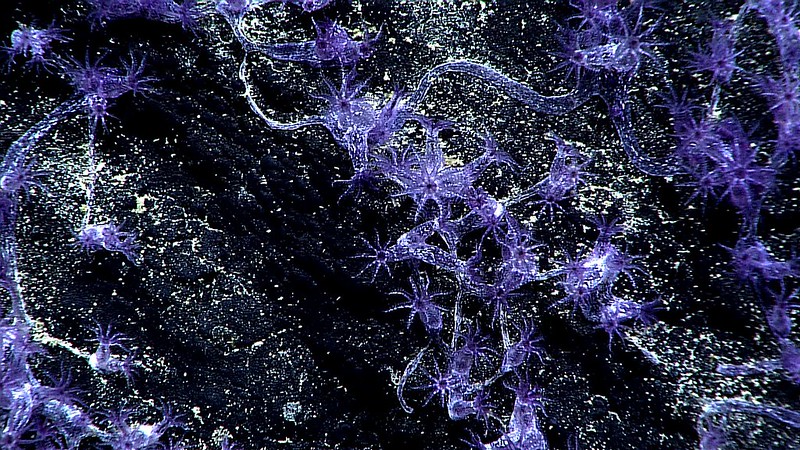










Really interesting article! Thought provoking for sure.